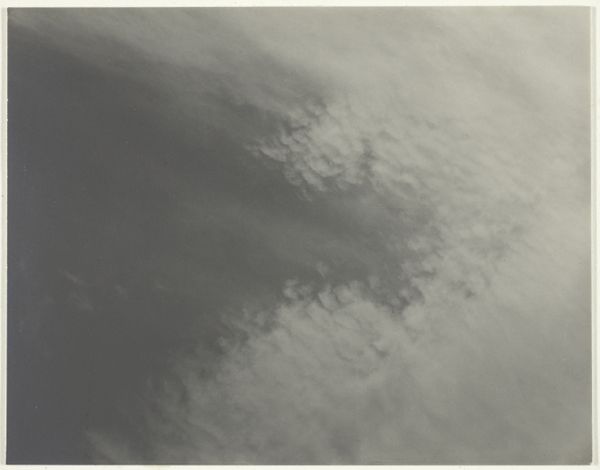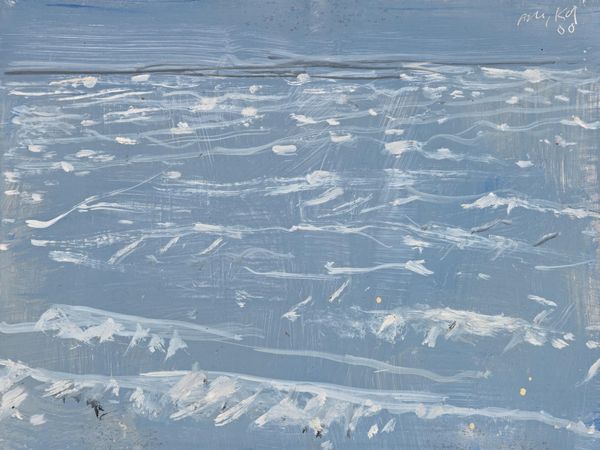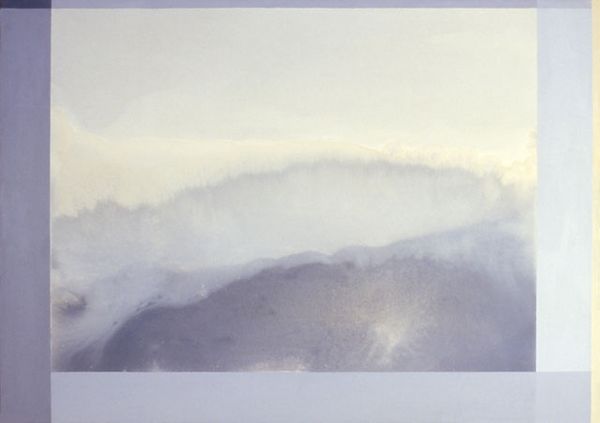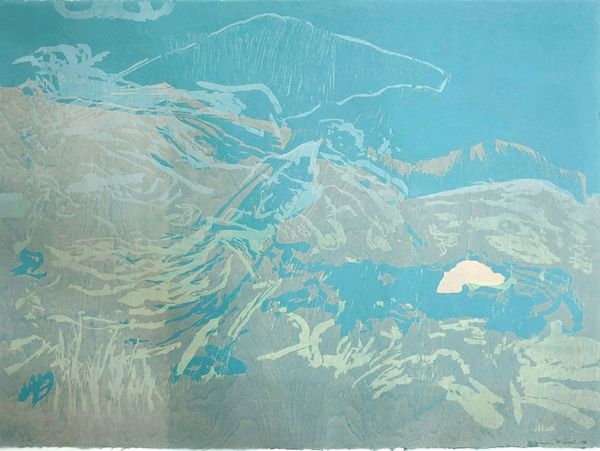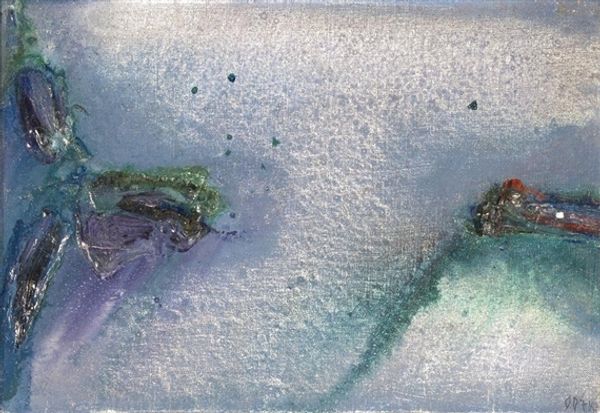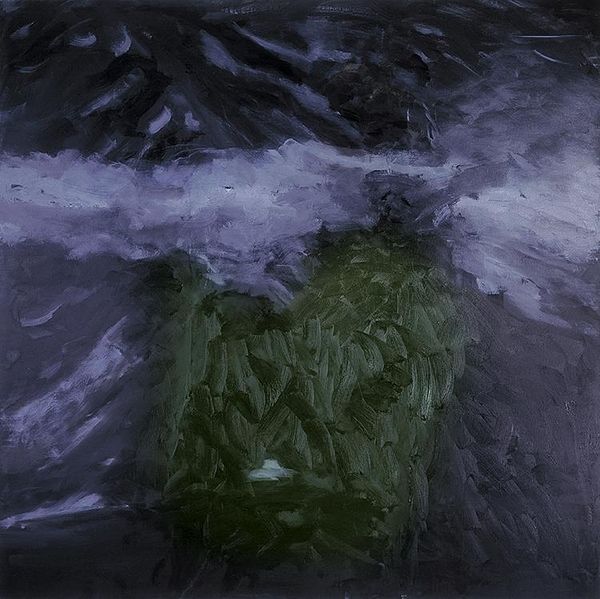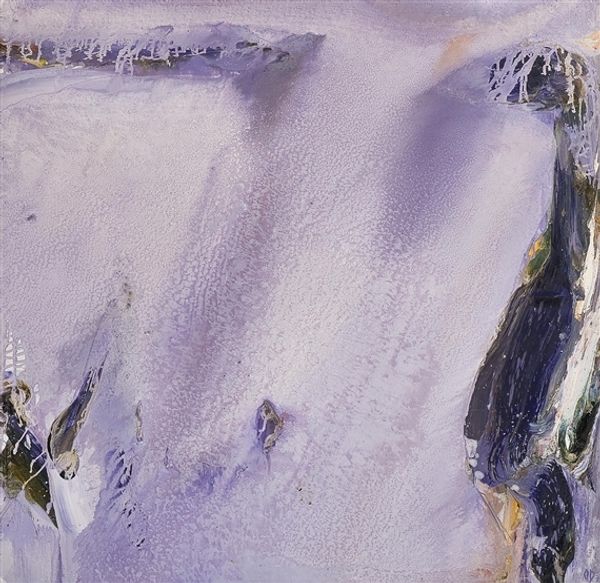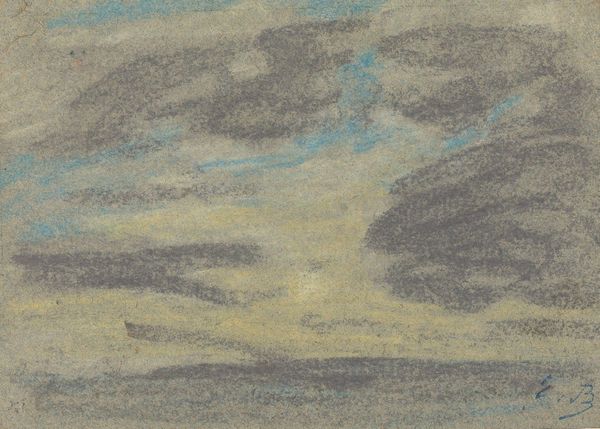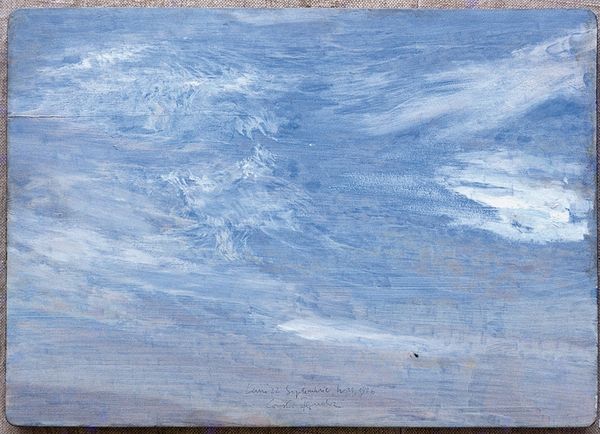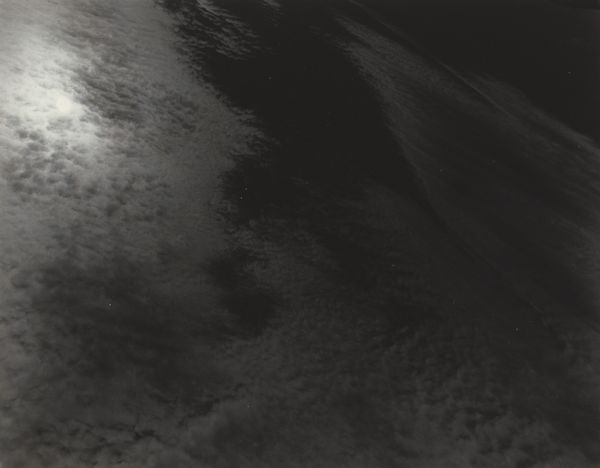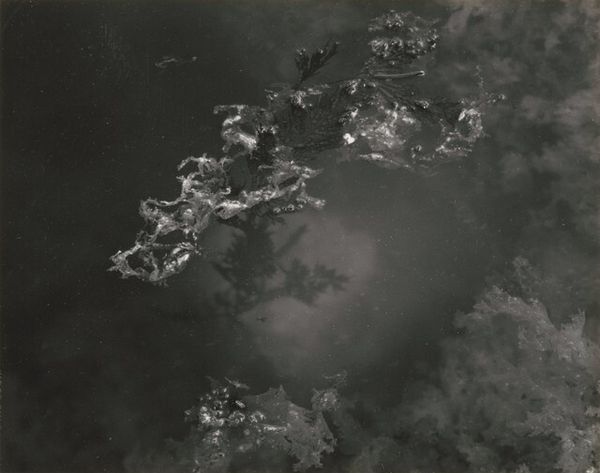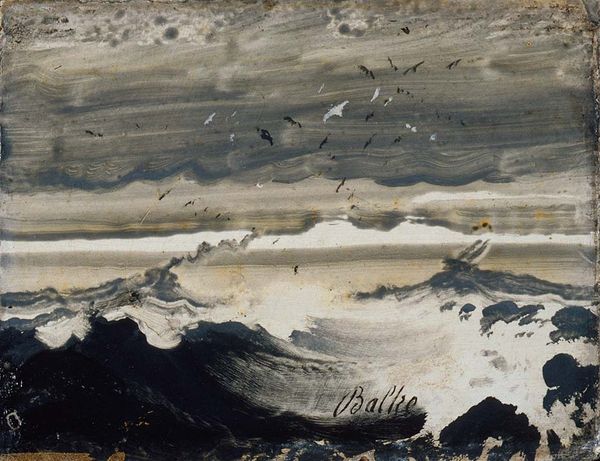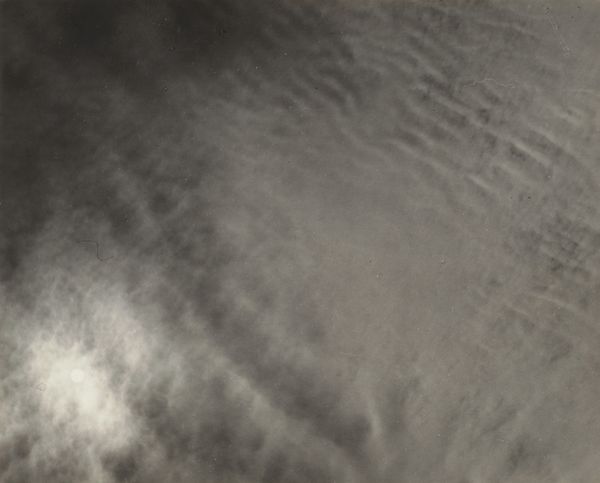
Copyright: Public Domain: Artvee
Editor: This is Winslow Homer's "Seagull and Waves, Probably Prout’s Neck, Maine," created sometime between 1890 and 1900, using watercolor, pencil, and charcoal. It feels quite minimalist, just shades of blue with faint white lines. What strikes you most about this work? Curator: What I find compelling is the visible labor, the layers of dry media worked into the paper’s surface. The artistic process itself becomes foregrounded. Do you see how the artist has almost scrubbed the pigment into the material, creating that textured surface? Editor: Yes, now I see that it’s not just a wash, you can actually see the marks of the charcoal and pencil. Does that reflect anything about the time it was made? Curator: Absolutely. This period witnessed significant industrial and material changes. Artists were exploring the properties of new and traditional materials, engaging directly with the physical aspects of artmaking. Consider how the depiction of the sea—a force of nature—is rendered through manufactured materials: paper, pigments, charcoal, pencils. What tensions might that reveal? Editor: That's an interesting point. I hadn’t considered the contrast between the natural subject and the industrial materials used to depict it. It highlights our own human intervention and mediation, doesn’t it? Curator: Precisely. And think about the societal context of leisure and coastal tourism in the late 19th century. These drawings became commodities, souvenirs of experiences marketed to a rising middle class. This links high art directly to consumer culture. Editor: I never thought about it like that. It makes you think about who got to consume these images and the lifestyle they represented. I am learning about the ways that materials carry cultural and social significance. Curator: Exactly! The artistic process and materiality, therefore, become incredibly rich avenues for understanding art’s role in a broader social landscape.
Comments
No comments
Be the first to comment and join the conversation on the ultimate creative platform.

